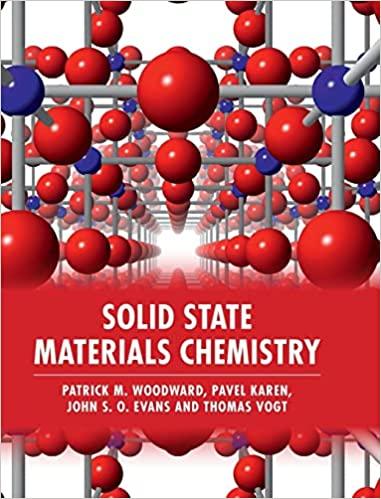Consider a heterogeneous enantioselective catalyst based on a catalytically active metal center attached to a MOF linker.
Question:
Consider a heterogeneous enantioselective catalyst based on a catalytically active metal center attached to a MOF linker.
(a) How would you expect the reaction rate to compare to the equivalent catalyst in solution? How might reaction rate vary as the pore size varied?
(b) How might the enantiomeric excess compare to the equivalent catalyst in solution?
(c) How might catalyst stability and turn-over compare to the equivalent catalyst in solution?
(d) How would you prove that catalysis is truly heterogeneous and not caused by catalyst leaching from the MOF into solution?
(e) How would you prove that catalysis occurs in the pores of the MOF and is not restricted to surface sites?
Step by Step Answer:

Solid State Materials Chemistry
ISBN: 9780521873253
1st Edition
Authors: Patrick M. Woodward, Pavel Karen, John S. O. Evans, Thomas Vogt





